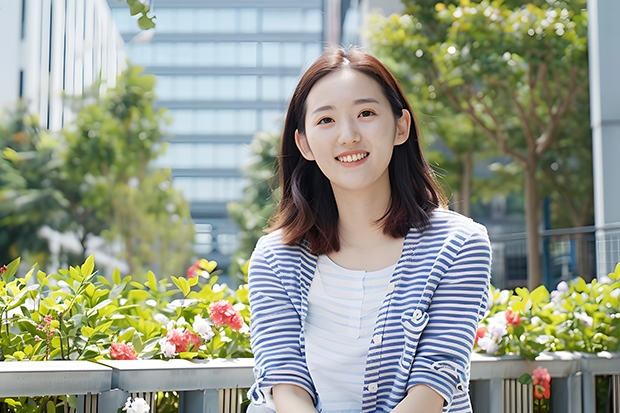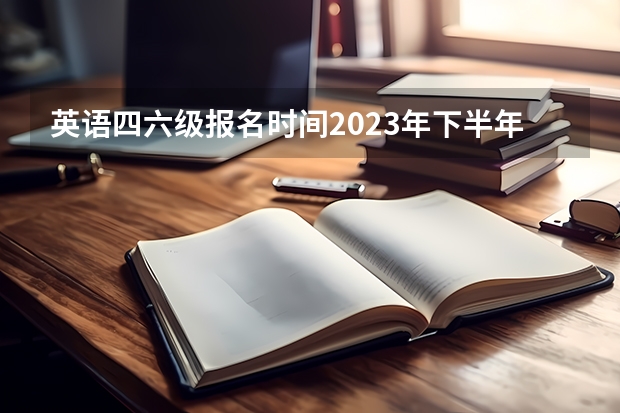听农民讲如何种植水稻的英文
2024-06-10 22:39:18 | 炎炎英文培训网
本文目录一览:

听农民讲如何种植水稻的英文
听农民讲如何种植水稻的英文:Listentofarmerstalkabouthowtogrowrice.
水稻种植业主要分布在亚洲季风区。
季风区水稻的种植约有7000年的历史,稻米是当地人们喜爱的主要粮食,所产稻米占世界稻米总产量的绝大部分。
中国是世界上最大的稻米生产国家。
水稻种植业是一种劳动密集型农业,劳动强度大,需要投入大量劳动来精耕细作,东亚、
东南亚
、南亚人口稠密,劳动力丰富;一站式出国留学攻略

水稻杂交技术 英文怎么说
Yuan Longping -- Father of Hybrid Rice
"I saw rice plants as tall as Chinese sorghum,” said Yuan Longping of a dream he once had, “each ear of rice as big as a broom and each grain of rice as huge as a peanut. I could hide in the shadow of the rice crops with a friend." Yuan was just awarded 5-million-yuan State Supreme Science and Technology Prize for his high yield hybrid rice species. This award is viewed as "Chinese Nobel Prize".
Road to Super Hybrid Rice
Born into a poor farmer's family in 1931 and a graduate from the Southwest Agriculture Institute in 1953, Yuan began his teaching career at an agriculture school in Anjiang, Hunan Province.
He came up with an idea for hybridizing rice in the 1960s, when a series of natural disasters and inappropriate policies had plunged China into an unprecedented famine that caused many deaths.
Since then, he has devoted himself to the research and development of a better rice breed.
In 1964, he happened to find a natural hybrid rice plant that had obvious advantages over others. Greatly encouraged, he began to study the elements of this particular type.
In 1973, in cooperation with others, he was able to cultivate a type of hybrid rice species which had great advantages. It yielded 20 percent more per unit than that of common ones.
The next year their research made a breakthrough in seeding. They successfully developed a set of technologies for producing indica (long-grained non-glutinous) rice, putting China in the lead worldwide in rice production. For this achievement, he was dubbed the "Father of Hybrid Rice."炎炎英文培训网
In 1979, their technique for hybrid rice was introduced into the United States, the first case of intellectual property rights transfer in the history of new China.
At present, as much as 50 percent of China's total rice fields grow Yuan Longping’s hybrid rice species, yield 60 percent of the rice production in China. Due to Yuan's hard work, China's total rice output rose from 5.69 billion tons in 1950 to 19.47 billion tons last year, about 300 billion kilograms more have been produced over the last twenty years. The annual yield is enough to feed 60 million people.
The "Super Rice" Yuan is now working on yields are 30 percent higher than those of common rice. A record yield of 17,055 kilograms per hectare was registered in Yongsheng County in Yunnan Province in 1999.
Quality or Quantity Oriented?
The debates among scientists about whether quality or quantity should take priority are frequently heard. In the under-developed world, the output increase is no doubt the primary concern, while people in developed countries prefer a high-quality rice.
Yuan had been asked to switch his major concern from increasing output to improving quality and taste, a task easier to accomplish for him. But Yuan was unswayed. He firmly believed, in developing countries, the output increase outweighs the urgency for a better taste, and that his foremost task was to increase the grain reserve in developing countries.
"First we must have enough food, then comes eating well," he said.
What's more, he explained, high yield does not necessarily mean a low quality. In the past, when the Chinese people were not sufficiently dressed and fed, they looked on high output as their only goal. So they used fertilizers and farm chemicals without limit. This surely led to quality degrading. At present, China has established nine indicators to evaluate the quality of rice, some of which are positively correlated with the output, while others are not. Last year, China planted over 3 million mu of hybrid rice, with an average yield of 650 kilograms per unit. The highest unit output has reached 1,139 kilograms. Due to improvement in quality, six indicators of the rice have met the First-grade level, and the other three the Second-grade. Some people, after trying this rice, said, "It is more tasty than the rice from Thailand."
Yuan is currently working on species meeting the second-grade standards set by the Chinese Ministry of Agriculture.
"The rice of this level is more affordable for urban and rural people," Yuan says.
Money and Fame
Longping High-tech, a seed company using his name, started business last May in Shenzhen. In return, Yuan got 5 percent stake or 2.5 million shares worth 2 million yuan.
Yuan's wealth is estimated more than 100 million yuan (US$12 million), making him one of the richest in China. But he cares for nothing more than his research.
"That figure means nothing," he says in a heavy local accent. "I’m satisfied with my life. Too much money means a burden. My mind is on my research only."
But he admits that the listing may help China's hybrid rice in international market and may bring more funds for future projects.
He has, with a donation of 2 million yuan, established Yuan Longping Foundation, which awards merited workers in agricultural research.
Four minor planets and a college in China were named after him, the first time a Chinese scientist's name has become intellectual asset.
"I am afraid of fame," said Yuan, his face lean, wrinkled and sun-burnt, "Too big a fame, too little freedom."
Two Wishes
In late 1960s, rice output was just over 300 kilograms per mu (0.06 hectare), but Yuan had increased that to more than 500.
But Yuan didn’t slow down, working hard on another breed with bigger grains of rice, and a yield of over 800 kilograms per mu.
This project, he said, was on two stages. The first was to achieve 700 kilograms per mu on large scale, which was realized in 1997. That year, Yuan saw the highest 870 kilograms of rice per mu in his experimental field in Hunan. The result was similar in an even larger experiment conducted in 1998.
The second target is to reach an annual yield of over 800 kilograms per mu. He has set the year of 2005 as the deadline for this goal. However, Yuan is confident in hitting that target two years ahead. One reason is an output increase by 7 to 10 percent has been seen in experimental fields; the other being a new planting technique which should bring additional 10 percent increase.
Besides, Yuan has another dream -- introduce this breed to and benefit every nation.
The FAO (United Nations Food and Agriculture Organization) 1991 statistics show that 20 percent of the world's rice output came from 10 percent of the world's rice fields that grow hybrid rice.
A famous economist claimed the Yuan’s achievement as a victory over the threat of famine and that Yuan was ushering us into a world with ample food.
Now, over 20 countries have adopted the hybrid rice. The FAO has vowed to be actively involved in spreading the Yuan's high-yield hybrid rice worldwide.
"If the new strain is sown in the rest of the rice fields, the present grain output worldwide can be doubled, a significant solution to the grain shortage," said Yuan.
Yuan worked as the chief consultant for the FAO in 1991, to share his knowledge with workers from other countries. He has gone abroad every year to provide guidance. He also sent scientists to India, Viet Nam, Myanmar and Bangladesh to work as advisors. Between 1981 and 1998, the Hunan Hybrid Rice Research Center under Yuan Longping held 38 training classes with over 100 participants from 15 countries.
With the help of Chinese scientists, the acreage of hybrid rice in Viet Nam and India increased to 200,000 hectares and 150,000 hectares respectively in 1999.
After Work
In spite of a busy schedule for academician of Chinese Academy of Engineering, vice-chairman of the Provincial Chinese People's Political Consultative Conference, Yuan has managed to keep some interests other than working.
In his spare time, he loves reading books and listening to music. Half an hour of reading in bed before sleep is his habit. He is also a good swimmer.
Other hobbies of his include daily motor-cycling and playing violin. He’s an occasional mahjong player too.
From sowing to harvesting, Yuan goes to fields twice daily, covering about 8 kilometers in total distance. Thus his motorbike has become Yuan's essential transportation. "Riding a motorbike was one of my favorite sports in my youth," Yuan smiled. "But now, it’s more for work than for fun."
Yuan picked up the hobby of playing violin from a music lover at college. During the "cultural revolution," classical music was viewed decadent, so he stopped playing and sent his violin away. He now suffers from arthritis and can no longer play violin. However, he still adores violin music.
“When I lose a game in mahjong,” Yuan smiled, “ I never hesitate to pay the price-- creep through under the table.”
(CIIC by Li Jinhui 03/05/2001)

英语作文杂交水稻之父(Father of Hybrid Rice)
So far, the world's average per-mu yield of rice remained at approximately 200 kg. Chinese Yuan Longping led his research team, through the haze of science to give the world the power of a strong fight against hunger. Therefore, China's hybrid rice by the world known as the "Oriental magic rice." Rice even higher than in sorghum, rice was also longer than the broom, rice as big as peanuts, he and his aides sat on rice cool shade below! Cities and villages, river north and south, both inside and outside China in the human will never be hungry, they excitedly spread the news of a legendary name - Yuan Longping1. In September 1930 in Beijing, Yuan Longping, a child born on the dream of becoming a scientist 2. Since 1953, graduated from Southwestern University, he has been conducting scientific research in agriculture 3. The last century 70's, he found very difficult to improve rice production, we decided to engage in hybrid rice research 4. There is no doubt that he was the world's food production has made great contributions to 5. Because of his great achievements, he received many honors and awards, including the "World Food Prize"
免责声明:文章内容来自网络,如有侵权请及时联系删除。

如何实质提高英语口语与听力水平人们常说听说读写,所以其实一般的顺序都是先听,再说,之后是读,最后才是写,但是针对我国的特殊情况,很多学生面临着就是会写,会读,但就是不会听。同一个单词,在页面上他认识,会写也会读,唯独从他人口中说出来他反而不知道是什么意思!因此,今天我们就来个逆向思维,针对我国特有的情况来说说利用会读来提高会听的能力。一般来说,衡量一个人口语水平高低主要看以下几个方面:

如何提高英文口语水平如何提高英文口语水平?1、多看视频。要想提高听力,就通过看一些演讲视频或者美剧等等(只要是你感兴趣的英语视频),我们不会一次性的真正理解所有的内容,需要通过一次又一次地重温,这时你会发现一些遗漏的术语、陌生的单词、表达方式或者笑话等等。通过这样的重复学习来提升英语水平,从而提高英语成绩。2、玩词汇游戏。丰富的词汇量是一门外语的重要组成部分。只需几句话,你就可以把信

如何测试自己的英语水平学习英语一段时间后,还不清楚自己的英语水平是怎么样怎么办,别担心,这里有全方位测试你英语水平的方法。下面是我给大家整理的如何测试自己的英语水平,供大家参阅!如何测试自己的英语水平一、大学英语四、六级等级考试毋需多言,绝大多数人都经历过疯狂的四、六级考试,以及与一纸证书并不相称的“哑巴英语”。这种极具“中国特色”的考试,与国际语言的评判标准完全不接

初中英语面试试讲稿模块对于教初中的英语老师,在正式讲课之前还要通过面试的试讲。初中英语面试试讲稿模块英语教师面试试讲讲课稿(阅读)(阅读课是教师面试最容易考到的题目,下面的讲课过程仅供大家参考,我自己总结的,写得比较详细,希望可以帮到大家。我讲的是无生试讲,也就是自己跟空气互动,说真的,就像是自己在自编自导自演一样,在讲台上唱戏,哈哈。我自己以面试第一名考上的呢,也祝愿你们顺利通过面

如何学习英语听力雅思学习英语听力雅思需要从以下几个方面入手:词汇积累:词汇量是听力理解的基础。考前需要掌握足够的词汇,包括它们的发音、拼写和含义。可以借助词汇书籍、在线资源或手机应用等工具进行词汇学习。精听与泛听结合:精听是仔细听懂每个单词和句子,并尝试理解其意思。泛听则是听取大意和抓住关键信息。可以在精听的基础上,通过泛听来提高听力理解能力。发音训练:正确的发音有助于理解听力材

如何自学英语口语和听力?自学英语口语和听力的方法有很多,以下是一些有效的方法:1.多听多说:多听英语材料,例如英语新闻、英语电影、英语音乐等,可以帮助提高听力水平。同时,要多说英语,练习口语表达。可以通过跟读、模仿、参加英语角等方式进行口语练习。2.创造语言环境:尽可能多地接触英语,例如在社交媒体上关注英语博主、阅读英语书籍等。同时,可以尝试用英语进行日常交流,创造英语

如何提升英语口语和听力1、听正常语速的英语,才能加速听力的进步英语听力练习方法也有很多了,现在是网络时代,可以从免费的资源学习网站里面找材料听,不管取自何种渠道,听力贵在坚持,听不懂也没关系,多听几遍,也可以查看原文后再了解其意。很多听力材料为配合学习者的程度而故意方面语速,这虽是无可厚非的变通方法,但也会产生一些不良的副作用。一是听惯了语速放慢的英语,在与外国人实际交往中就很

如何有效设计初中英语听说课内容摘要:初中英语教学的目的,是通过听,说,读,写的训练,使学生获得英语基础知识和初步运用英语交际的能力。但是实际教学中,以锻炼学生交际能力为目标的听说训练往往被忽略。自觉或不自觉的背离了大纲的教学要求。采用了传统的重译写,重语法的单一模式。因而不能实现大纲要求的英语教学目标。本文通过论述初中英语听说课对提高学生的英语能力的重要性,听说课中存在的问题以及听说课的设计
- 英语作文题型四级范文 急求十篇四级英语作文,带翻译,高分在线等
- 听农民讲如何种植水稻的英文
- 四级作文范文模板及翻译 英语四级作文带翻译
- 12月大学英语四级作文高分范文 9月大学英语四级作文范文模板
- 12月大学英语四级写作万能范文 急求十篇四级英语作文,带翻译,高分在线等
- 英语四级优秀作文范文 急求十篇四级英语作文,带翻译,高分在线等
- 关于如何减压的英语作文
- 谚语格言四级作文范文 6月英语四级作文谚语大全
- 9月大学英语四级作文范文模板(谁有英语四级作文优秀模板)
- 四级模拟卷子作文范文 12月英语四级作文范文模板
- 12月大学英语四级作文高分范文 6月大学英语四级作文【三篇】
- 四级英语范文追星作文 6月大学英语四级写作高分范文
-
 大学英语四级考试让带电子表吗 英语四级考试可以带手表吗?
大学英语四级考试让带电子表吗 英语四级考试可以带手表吗?2023-09-27 18:29:52
-
 英语四六级报名时间2023年下半年(每年四六级报名时间)
英语四六级报名时间2023年下半年(每年四六级报名时间)2024-04-26 11:50:57
-
 大学考试英语四级听力原题 大学英语四级考试听力真题原文
大学考试英语四级听力原题 大学英语四级考试听力真题原文2023-09-19 17:57:39
-
 特岗报名截止时间2023 2023年特岗考试时间
特岗报名截止时间2023 2023年特岗考试时间2024-04-05 21:54:09
-
 历年英语六级 真题+听力MP3 下载地址谁有? 急求全套大学英语六级资料包在线百度网盘资源 大学英语四级词汇表及mp3格式下载
历年英语六级 真题+听力MP3 下载地址谁有? 急求全套大学英语六级资料包在线百度网盘资源 大学英语四级词汇表及mp3格式下载2023-10-23 01:18:39
-
 获取大学英语四级考试证书 英语四级证什么时候发下来?
获取大学英语四级考试证书 英语四级证什么时候发下来?2023-09-07 00:36:31